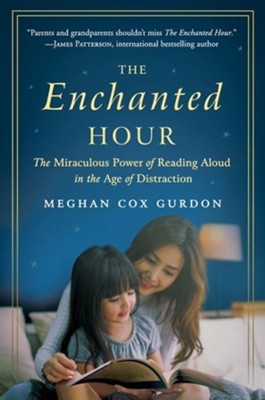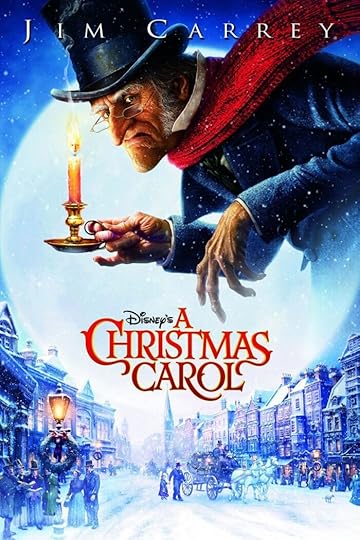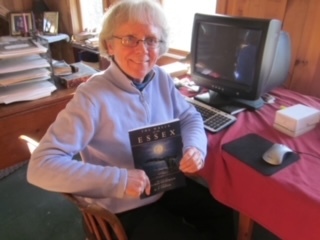Kathryn Griffin Swegart's Blog, page 11
March 20, 2021
Ice Out!

I am a city slicker, raised in the suburbs of Boston, accustomed to the clatter of MBTA trains roaring into the station. As a child, I imagined train headlights to be dragon eyes gleaming out of the black tunnels dug below city streets. Little did I know that another spooky subterranean world lurked in my future. That world exists under frozen layers of water on a nearby lake.
One early winter day I inched my way out onto the ice and listened. Deep, rumbling sounds arose from beneath my feet, like an ancient spirit awakening. Magical music ascended, making me think of a humpback whale swimming below. I shuddered and thought it prudent to head back onto shore. Instead, I stood my ground. The ice cracked and popped and boomed like thunder. An earthquake rippled beneath my feet. Winter winds blew off the mountains. Dark days lay ahead, filled with blizzards, and ice storms, bitter cold and slippery roads.
Now it is spring. Lake ice melts in shimmering puddles, harbinger of a great spring thaw. Green grass returns, miraculous in nature. I watch for early robins and that first purple crocus.
New England seasons remind me that life is fleeting, filled with transcendent moments in everyday life. I only must be silent and watch.
March 8, 2021
The Enchanted Hour

Two-year old Jack splashed in the tub as his mother, Alice Kirke, washed his hair. With each rinse, tension began to build. Her husband, Kevin Kirke, was a Marine major who had been serving in Afghanistan. Kevin had not seen his son for one year, but now he was home, ready for that first night together. Would Jack display separation anxiety? Would Kevin be a stranger to his son?
After the bath, Alice put Jack in his pajamas. He raced to his bedroom and grabbed Curious George off the bookshelf. Alice told what happened next: “Jack…ran back to Kevin, turned around and backed into Kev’s lap, sat down, and handed him the book.”
Alice would tell you that this was not a fluke. Kevin participated in a military program for deployed parents to connect to their children by reading stories. Using recorded sessions, Kevin read picture books to Jack. To their delight, Alice and Kevin witnessed the power of reading aloud to children.
Written by Wall Street Journal columnist Meghan Cox Gurdon, The Enchanted Hour spans a vast landscape of brain science, behavioral research and astounding stories about the impact of this simple act of reading to a child or to a teenager or to a dementia patient. I shook my head in wonder at each turn of the page, inspired by funny stories from her own family (she is the mother of five) and others who had found their lives “dazzlingly” transformed.
A promise appears on the back cover:
Imagine an elixir so strong that a daily dose would make your family smarter, happier, healthier, more successful, and more closely attached. Now imagine that you would have it without spending a dime. It all starts with a book, a voice, and a place to sit.
Inspired to action, I began a Zoom story-time with my grandchildren who live far away. Every month I lug home a bag of books from the library and sift through the collection, selecting the ones that will be fun to read. Once story-time begins, I see them study the pictures and chip in comments that relate to their lives or books they are reading.
One favorite moment came when my husband read Lewis Carroll’s nonsense poem Jabberwocky. My daughter listened and then began to recite the poem from memory. She probably had not read the poem for many years. This “magic elixir” had been secretly planted in her mind, blossoming in one delightful moment.
Many parents struggle with the intrusion of screens and devices, worried about the effect it has on their children. Here is the solution. Read this book! Take action! Read aloud to your family. It is an “alarmingly easy” and fun remedy to a crisis of distraction in our times.
February 11, 2021
Was it a Miracle?

Freezing rain beat down on our windshield, clogging up the wipers, and sending me into the white-knuckle zone. I tried not to look at skims of black ice that coated the roads. Perhaps we should just check into the nearest hotel and not attend our grandson’s baptism. I suggested this to my husband, but he just gripped the steering wheel and drove on through the messy weather. Perhaps there was some hope that the black clouds would disperse, I thought foolishly, and studied the sky. Not a chance. All was gray and gloomy.
After many agonizing miles, we drove into the church parking lot. By this time my heart pounded with anxiety. I creeped along the icy pavement up to the church, hanging onto my husband. He opened the heavy wooden door and we stumbled inside, filed with relief that we had make it in one piece. I tried not to complain to God, but I did. Why did theweather have to be so horrible?
I managed to regain my composure and sat in one of the front pews. I waved to my son and his family, amazed at how happy and relaxed they looked. Monsignor Anthony appeared in the sanctuary and the baptismal rite began.
“What name do you give your child?” he began.
I settled back and absorbed every hopeful word of the ceremony. Meanwhile, my husband held up our cellphone and snapped photographs. Monsignor Anthony continued the prayers. “Father, you give us grace through sacramental signs, that tell us of the wonders of your unseen power.”
At the final “amen”, I looked at the photos recorded on our cellphone. A surprise awaited me. Every image displayed floods of sunlight streaming into the church…like it was a sunny day! I was dumbfounded. Had we captured a photographic record of sacramental grace? I sat for several minutes, not knowing what to think. I slipped out the front door to check the weather. Freezing rain pelted me in the face. At that moment, another reality hit me in the face. Sacramental grace is real, so real that we can see and feel it, just like, well…sunbeams bursting through clouds on a gloomy day.
February 5, 2021
The Romance of Ice-Fishing

Twenty-seven years ago, my family moved from old Cape Cod to central Maine. As you can well imagine, it was quite a culture shock. Spring came to Cape Cod in March. We planted peas on St. Patrick’s Day and actually saw the phenomenon of green grass. Up north, March is often the snowiest month.
Climate change was not the only adjustment. In this lake region, outdoor sports reigned supreme. Autumn brought deer hunters into the woods. I still remember driving downtown and was horrified to see a dead deer hanging off the back of a pickup truck.
Ice thickens in January and the lake is dotted with ice shacks-those huts that ward off cold and wind to protect hardy fishermen. I hear the sound of augers drilling holes in the ice; bald eagles fly overhead in search of fish scraps. I watch the fishermen use slotted spoons-skimmers-to keep the holes clear. Little orange flags are planted in the holes. When fish grabbed the bait, the flag pops up as a signal they had a bite. It was a new world for me as it was for a woman I met several years ago. She had relocated from Washington state and puzzled over the those huts out on the ice-certain that they were outhouses.
I never thought ice fishing could foster romance. I was wrong. My hairdresser told the story of a man who took his girlfriend ice fishing. She saw the orange flag shoot up-they caught a fish. She slid over to the hole and a sparkling object caught her eye. It was a diamond ring!
On my snowshoe excursions, I see sparkles out in the woods. Snow bridges gleam over the creek out back. I stand and listen, breathing deeply of the crisp air. Underneath the snow, the stream still flows, bringing movement to the frozen landscape and with it, the hope of spring.
January 13, 2021
To Fly a Kite….

One brilliant autumn afternoon I turned by face to the sun and felt its warmth, drinking it in, as New Englanders do, knowing that winter snows would soon beat upon us. I do not take this sunny day for granted. I am standing in the middle of a football field exhilarated by the presence of my sons, daughter-in-law, and four of my ten grandchildren. I see my grandson toss a toy airplane and watch it do double loops. My granddaughter just keeps swinging, announcing that she is just too happy to stop. My son helps his six-year old son learn to fly a kite.
Patiently, my son shows him how to hold the kite, to keep running, and watch as it sails in the sky. Kite flying begins with many false starts. Still, the good father gently persists. Some readers might perceive this moment to be of small importance. After all, fathers often teach sons about the fine skill of kite flying. Be assured, this moment is special. I am about to witness a moment of radical thanksgiving.
The little boy I now watch run down the field with kite soaring overhead could not always run and play in the sunshine. In his early years, the child spent many months in a hospital, often confined to a crib. Periodically, his parents helped him walk down the hospital corridor. He wore a hospital gown and wobbled along, determined to get strong.
On that recent glorious fall day, I reminisced with my son about how far we all had come as a family.
My son agreed. “Back in the hospital, I dreamed of days like these.”
I realized that it is necessary to cultivate a spirit of gratitude, “to keep my eyes open and my spirit alert…to live in continual thanksgiving.”
Such are the words of Venerable Francis Xavier Nguyen Van Thuan. In a remarkable litany of gratitude, Cardinal Thuan felt overwhelmed by the gift of his birth, by the labors of his father, by priests who gave him the Eucharist, for being Vietnamese, and for “the people whom place obstacles in my path and cause me trouble; they help me to become holy.”
Dig deeper on that last one. What obstacles? He was imprisoned by the Vietnamese government for thirteen years, nine of those years were spent in solitary confinement.
Never again will I complain about anything.
In my less dramatic way, I strive to be thankful for those everyday moments in life, taught to me in many ways by a little boy who has learned to delight in a kite soaring in a bright blue sky.
December 28, 2020
A Christmas Mystery

High atop a nearby golf course, I walked with family. One day after Christmas, the grass had a powdered sugar coating of snow that gleamed in the winter sun. Out of nowhere, a tiny bird flitted across our path and perched on a bush. Most birds migrate from Maine; those that remain are familiar and few. This bird in the bush was a stranger to me. Upon close scrutiny I identified it as a golden-crowned kinglet, considered by ornithologists to be the world’s smallest perching bird, weighing in at five grams …the size of two pennies
Naturalists have studied the kinglet for decades, baffled by its ability to survive ice and snow, defying the maxim that only larger animals can generate enough body heat to stay alive. Award-winning author Bernd Heinrich wrote of his fascination with this mysterious bird. “Its diminutive size and presumed diet of insects, when insects are hidden and in hibernation, combined to produce an unsolved mystery.”
As I read this reflection by Heinrich, it affirmed for me the transcendent nature of our world. In this season of Christmas, we rejoice in the ultimate mystery. God became man and dwelt among us. In this new year that lies before us, I will continue to look for small graces, God’s hand in my life, and be ever grateful, even for a tiny woodland bird that flies across my path.
December 4, 2020
A Christmas Carol

The young writer was desperate to come up with a quick fix for his money woes. Sales of previous books were poor and his wife was pregnant with their fifth child. It was October of 1834. As he wracked his brain for an answer, an idea came to him. Christmas books made money, but there was not much time to get a book written and published in six weeks. No better solution came to mind, so he plunged forward.
Charles Dickens lived in a time when children were forced to work in factories. As a child from an impoverished family, Dickens had worked in a factory and developed a sense of kinship with the poor. In March of 1934, Dickens visited a factory and decided to write a pamphlet entitled, “An Appeal to the People of England of Behalf of the Poor Man’s Child.” The pamphlet never was written, but the idea stayed with him.
Later that year, Dickens visited schools for the poor, encountering children who lived on the streets, learning to survive as thieves and prostitutes. Soon afterward, he gave a speech on the importance of education for the poor. Not long after the speech, he got the idea for his famous story.
Dickens worked feverishly at his desk, churning out The Christmas Carol in only six weeks. The publisher created a beautiful book with a red cloth binding, gilt-edged pages, and colored illustrations. By the way, a first edition is available on Etsy for $32,000.

Alas, the book was a financial flop. Undaunted, Dickens hit the road, reading his story in 127 performances over the next few years and helping to make Tiny Tim and Ebenezer Scrooge household names. Both characters were based on real people.
Thomas Malthus was a 19thcentury economist who argued for limiting population growth, particularly those mired in poverty.
It could well have been Malthus saying these words of Scrooge,
Since you ask me what I wish, gentlemen, that is my answer. I don’t make merry myself at Christmas and I can’t afford to make idle people merry. I help to support the establishments I have mentioned: they cost enough: and those who are badly off must go there.” “Many can’t go there; and many would rather die.” “If they would rather die,” said Scrooge, “they had better do it, and decrease the surplus population.”
Tiny Tim was inspired by two family members. Dickens had a sickly younger brother they called Tiny Fred. He also had a disabled nephew named Henry Burnett, Jr.
The Christmas Carol became one of the most famous stories ever written, inspiring movies, musicals, and stage productions. Its timeless themes of redemption and charity continue to bring hope to a world weary of sin and despair.
November 21, 2020
The Wreck of the Essex

On November 20, 1820 the Nantucket whaling ship Essex sailed Pacific waters in search of sperm whales. Thousands of miles from land, the ocean was filled with these great leviathans who roamed the deep. Twenty men were on board, unaware of the fact that their lives were about to change forever.
Calm waters lapped against the bow of the ship, as some of the crew hunted in smaller whaling boats a short distance away. And then it happened. First mate Owen Chase, busy with the routine tasks at hand on board ship, looked up to see a gigantic whale charging them at full speed, crashing into the bow with “an appalling and tremendous jar”. As the whale swam away, the ship began to sink. Minutes later, Chase discovered the whale “enveloped in the foam of the sea…and I could distinctly see him smite his jaws together, as if distracted with rage and fury.” He attacked the ship again, destroying the bow.
Thus began the incredible journey of twenty men aboard three small whaleboats, men who endured starvation, thirst, and storms. Owen Chase now assumed leadership, vowing to bring his men home safely to shore. In all of the three-month fight for survival, Chase never forgot the attack. Six months after his arrival on Nantucket he wrote a journal in which he described the terrifying moment. His mind was obsessed with “the dismal looking wreck, and the horrid aspect and revenge of the whale.” Chase considered the attack to be “premeditated” and the whale filled with malice toward them.
If all of this sounds familiar, it is because Owen Chase’s journal was the direct inspiration for Moby Dick, Herman Melville’s epic tale of the white whale. Melville read the first mate’s account and admitted it had “a strange effect on him”. He wrote in a chapter called “The Affidavit” about the Essex tragedy, using it as proof that a whale could be malevolent and calculating.

Several years ago, I wrote The Wreck of the Essex for ages 9-12. I had been fascinated by the story for many years, and believed it was an action-packed adventure, perfect for young readers.
This week marks the two hundredth anniversary of the sinking of the whaleship Essex. If you would like to learn more about the book, go The Wreck of the Essex by K.F. Griffin (my maiden name). Free downloads will be available until this Wednesday.
November 7, 2020
Stressed out? Try this!

In our limited viewpoint, the year 2020 has been filled with weird twists and turns, some call them unprecedented. My son and I reflected on this weirdness and projected that five years from now, we will have a new expression to describe strange twists of fate. We may say…that is so 2020.
In order to break this stress cycle, I decided to inform you that tomorrow, November 8th is National Cappuccino Day! Cappuccino is one of the most popular coffee drinks in the world. Ever wonder about the name? Take a close look at the spelling. Recognize a Franciscan religious order embedded in the name? You guessed it. The origins of this sweet milky concoction can be traced to the Capuchins.
In the year 1683, a holy Capuchin friar named Marco of Aviano, an advisor to Pope Innocent XI, rallied Christian forces against Turkish invaders to defend Austria (once part of Italy) in the Battle of Vienna. Victory belonged to Christian forces. In the aftermath, soldiers found sacks of coffee abandoned by the Turks. One sip told them it was too strong. In this momentous episode in human history, a soldier had the bright idea to add whipped cream and spices. Since the drink was similar to the brown robes of Marco’s habit, they named the drink “Cappuccino”.
So the next time you have a 2020 moment, treat yourself to a Cappuccino and remember Marco of Aviano who put his faith in the Lord and won a victory against insurmountable odds. “For nothing is impossible with God”.
October 13, 2020
Did Lucia Witness the Miracle of the Sun?

October thirteenth is the day that we remember one of the most spectacular miracles ever recorded in Catholic history. In the year 1917, seventy thousand people gathered on a hillside in Fatima, Portugal to witness a miracle. It was an event predicted by ten-year old Lucia dos Santos, a child chosen by God to experience six visions of the Blessed Mother who appeared to Lucia and her younger cousins, Jacinta and Francisco. In one of these visions, Lucia asked Our Lady for a sign so that all might believe in the apparitions and the messages to pray the rosary and offer sacrifices for sinners.
Many newspaper and personal accounts exist that describe the miracle. Among those accounts is that of Portugese journalist Avelino De Almeida who came that day hoping for a hoax. Instead, he saw a solar phenomenon. “Before the astonished eyes of the crowd, whose aspect was biblical as they stood bareheaded, eagerly searching the sky, the sun trembled, made sudden incredible movements outside all cosmic laws, the sun ‘danced’ according to the typical expression of the people.”
In research for my upcoming book, Lucia of Fatima, I stumbled across a startling fact…Lucia did not see the sun spin, turn red and plummet toward earth. Instead, she and her cousins witnessed another vision, that of St. Joseph and the Child Jesus and Our Lady with Jesus in which He blessed the world. These visions vanished and Our Lady appeared as Our Lady of Carmel.
Here is a quote from the book A Pathway: Under the Gaze of Mary, a biography of Lucia written by the Sisters of Carmel of Coimbra, who lived with Lucia for decades. They described the visions of Jesus, Joseph, and Our Lord as seen by the children.
“While the children gazed at these later visions, the miracle of the sun occurred, the promised sign to confirm the truthfulness of the apparitions. The shepherds did not see the miracle of the sun (emphasis added). It was not intended for them, but for the crowd, so they might believe.”
I had not read this anywhere. Yet it does make sense. Lucia, Jacinta, and Francisco believed in the apparitions. They were ready to die for this belief. They suffered humiliation and persecution from the press, neighbors, and their own families.
On this day, one-hundred and three years after the miracle of the sun, we remember Lucia and her cousins, both canonized in 2017. Our Lady’s message is contemporary, brought to us in a prophetic mystery that warns of the errors of atheism and the spread of communism, forces that threaten civilized society, even to this day.



